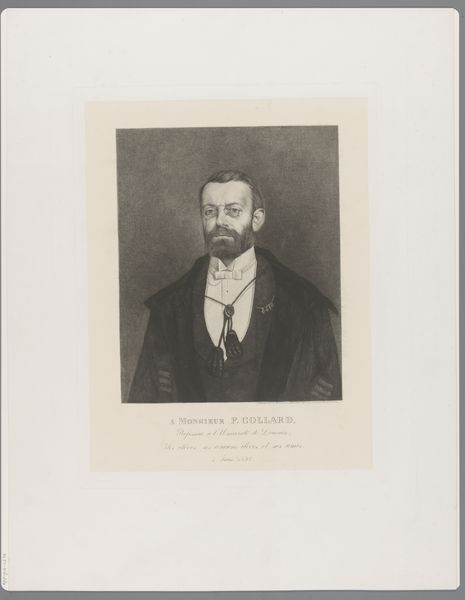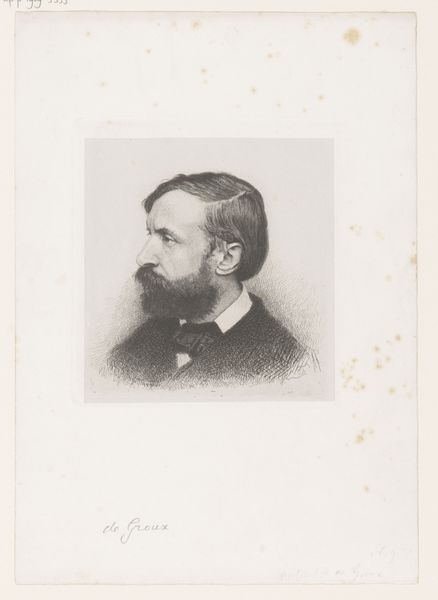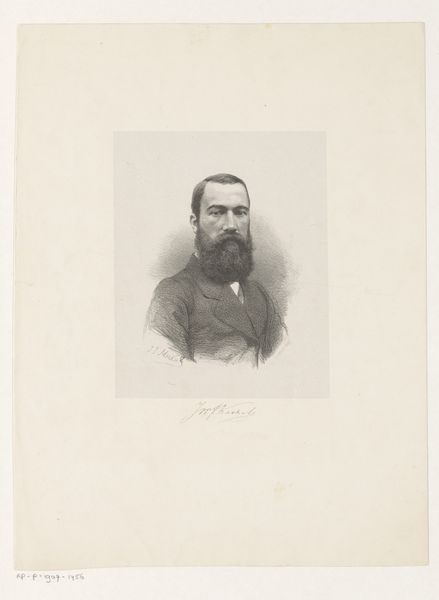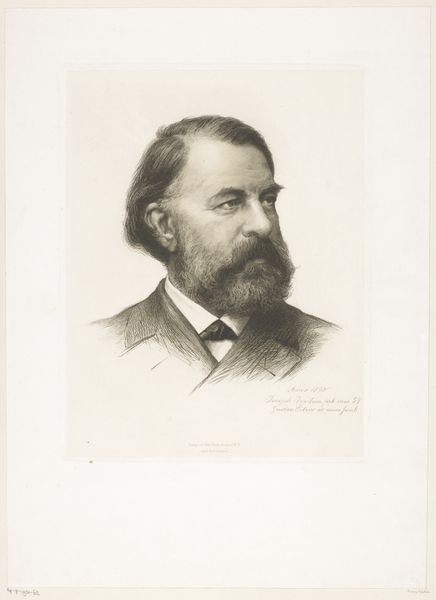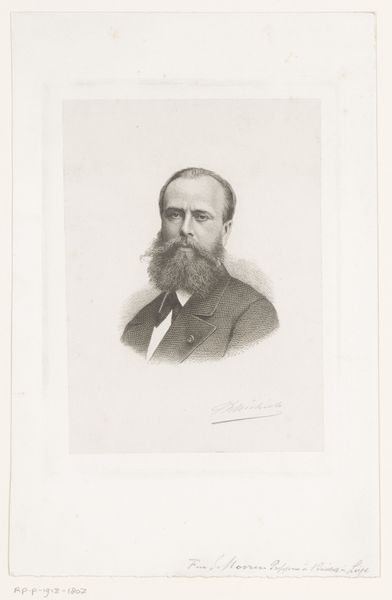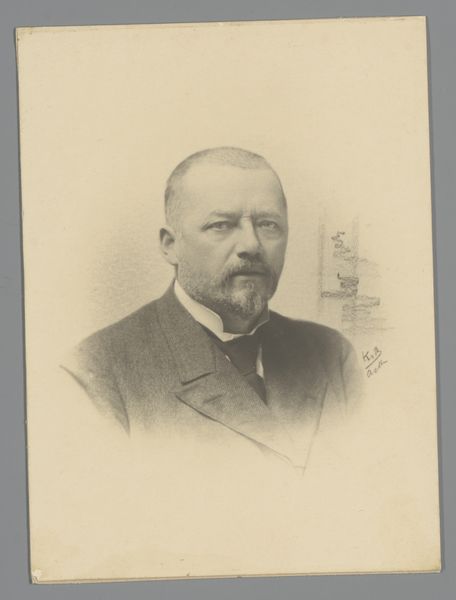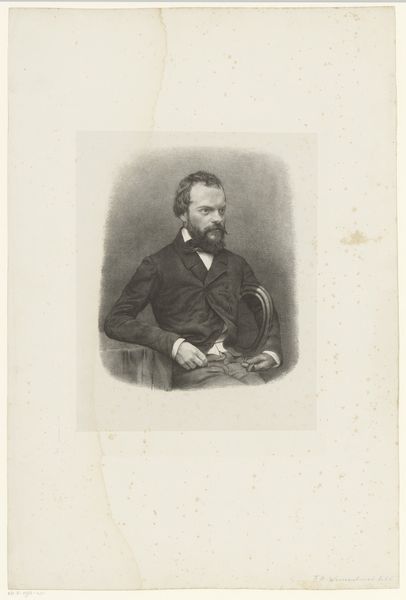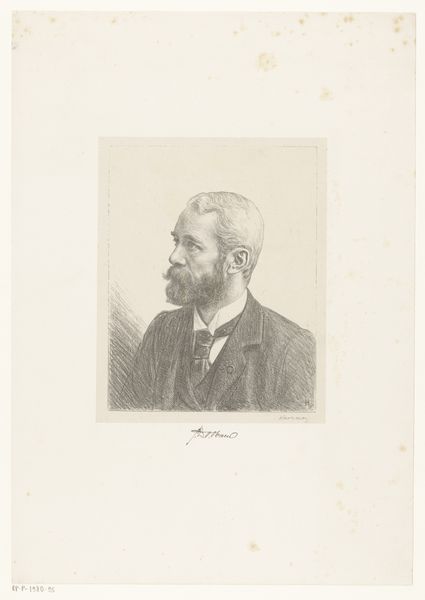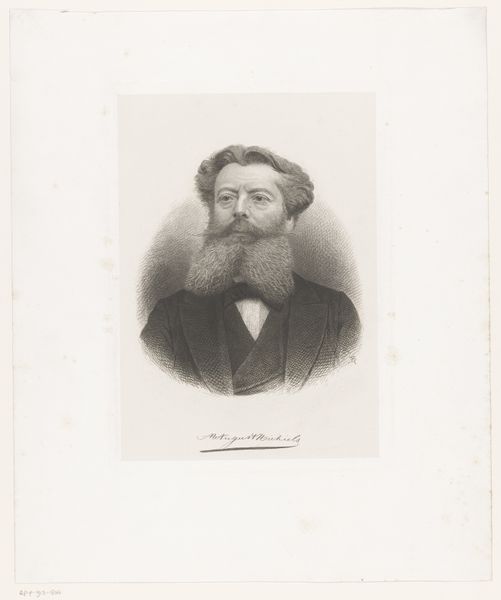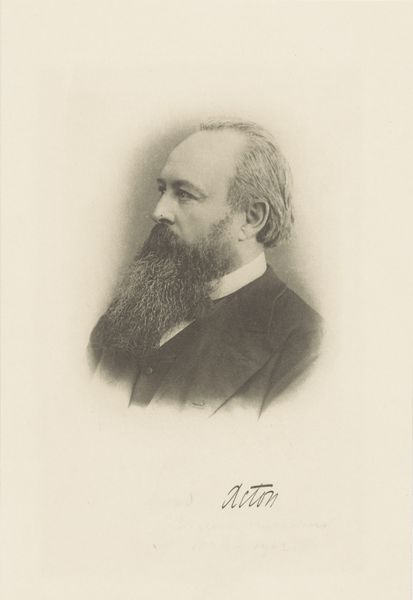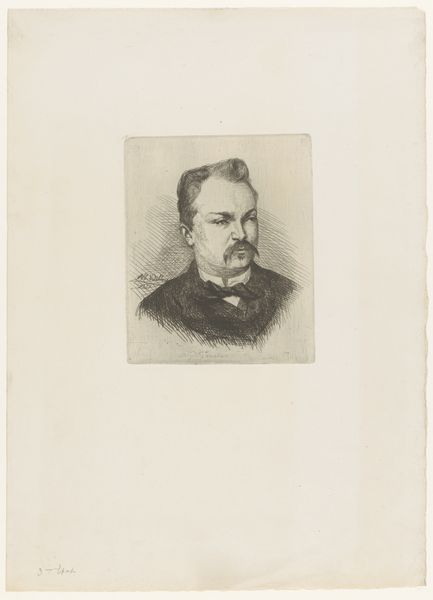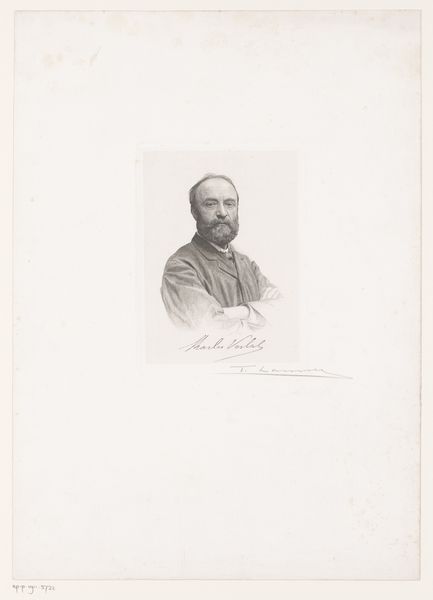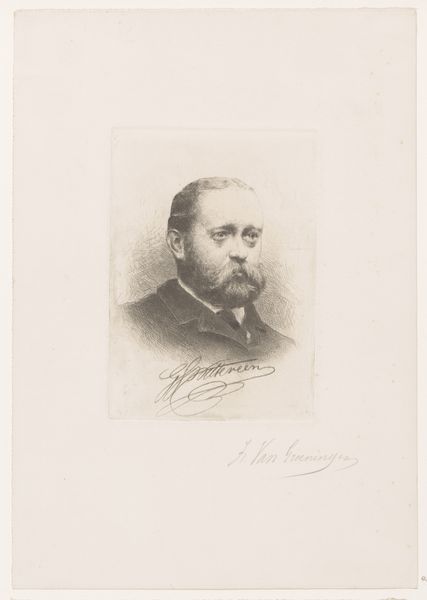
drawing, graphite
#
portrait
#
drawing
#
graphite
#
realism
Dimensions: height 400 mm, width 303 mm
Copyright: Rijks Museum: Open Domain
Curator: Here we have "Portret van een onbekende man, mogelijk Barsienno", a portrait of an unknown man by Willem Philip van der Veken, dating back to the 1880s. It's a graphite drawing. Editor: My first impression? He looks intensely serious. There’s something weighty about the formality of his attire, but also in the delicate graphite strokes that capture such detail, especially around the eyes. Curator: Indeed. There’s such an air of realism; it almost feels like you could reach out and touch the fabric of his coat. I wonder, though, about this graphite. It wasn't the fanciest material, right? How did this medium impact portrait production in that era? Was it considered less 'high art' than, say, painting? Editor: Precisely. The proliferation of graphite pencils created an avenue for portraiture to become somewhat democratized. It allowed for replication and distribution on a wider scale. Also, think about the act of drawing itself. Is there a difference between drawing someone's face, which is intimate, and painting someone’s face, which involves a far higher budget for oil paint and studio rental and is, let's be honest, a display of wealth? Curator: A fascinating point! It pushes us to consider what the choice of medium signifies. Perhaps graphite lent itself to a more accessible, or even humble portrayal, focusing less on aristocratic ideals of beauty. The very act of drawing, so direct, almost whispers of immediacy, connecting the hand to the eye and heart with striking clarity. It reminds me of looking into a mirror, you can only know as much about what's in front as your skill to read yourself can do. Editor: So the work is actually about labor...the act of using graphite itself! The man in the picture seems pretty middle-class as well. Maybe even like he had ink-stained fingers before he sat for his drawing! In this sense, the portrait might be considered more working-class as a celebration of graphite over oil-on-canvas. Curator: The idea that this medium captures not just a likeness, but the silent echoes of a shift in social and economic realities is truly potent. Art making becoming more immediate, tactile... Editor: Almost anyone can use it too. And that makes it far more accessible to use for recording one’s ideas and impressions in preparation for a great artistic feat! Anyway, what I notice most is the look in this fellow's eyes. I bet he's trying to size us up even now. Curator: Well, it definitely made me reflect upon where and when things are created. And what they really mean to begin with!
Comments
No comments
Be the first to comment and join the conversation on the ultimate creative platform.
